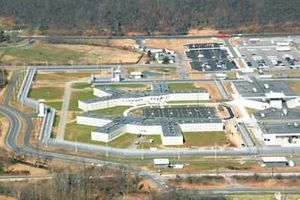World's Toughest Prisons - TV review
First there was the Tower of London, writes Ben Lammas, then Alcatraz, now with its impenetrable cells able to withstand bomb blasts and technology ensuring dangerous inmates are kept safely away from each other, North Branch may be the toughest yet.

First there was the Tower of London,
, then Alcatraz, now with its impenetrable cells able to withstand bomb blasts and technology ensuring dangerous inmates are kept safely away from each other, North Branch may be the toughest yet.
A hi-tech maximum security prison in Maryland, USA, the North Branch opened in 2003 and houses some of the most serious offenders in the States. Last night's World's Toughest Prisons (Channel 5) – a one-off documentary with the tagline 'Big, Bigger, Biggest' – offered an interesting closer look at the prison labelled one of the world's 'mega-structures'.
Despite the hyperbole the hour-long Channel 5 programme last night was a genuinely revealing look at the technological advances that have enabled North Branch to become one of the most secure prisons in the world.
The film delved back in time to show us how the architecture and technologies of prisons that have gone before have led to the design of the North Branch.
We learned that the building was made possible thanks to historic engineering breakthroughs at four earlier prisons – including those earlier 'escape-proof' structures like the Tower of London and Alcatraz Island – each of which featured an innovation that allowed engineers to build even more secure facilities.
For instance the cells at the North Branch are made with a 'secret ingredient' of super hard concrete housed in a super strong metal cage. The cage means even if inmates happen to make a hole in the concrete they will find themselves going nowhere fast.
This little innovation we found was inspired by the escape of three convicts from their cells on Alcatraz decades before. Despite being billed as the most secure prison in the world over time the concrete walls were weakened so by the leaking of sea water used to flush the toilets that in the end three convicts were able to scrape their way out through the crumbling walls using spoons.
And just like the Tower of London which had four layers of security, the modern prison in Maryland goes a few better and adopts seven layers of security with row upon row of razor sharp wire fencing.
Every now and again the camera visited an inmate in his cell at the North Branch who reminded us just what a mission impossible it would be too escape from such a place.
But despite their protestations at the prospect of anyone escaping, staff interviewed are cautious over their boasts about the security of the place. Tellingly the claims by prison staff are that it is 'nearly impossible to breach the seven layers of security.'
And when the designer of the new impregnable cells is interviewed he gushes: "To date no one has escaped from our cells," then his smile cracks and he says to camera "Why do I feel as if I have just jinxed us."
And that is the thing. Every prison that has claimed to be the most secure yet has always had its escapee, sparking the need for an even more secure prison to be built in its place inspired by the successes and failings of the prison before it.
With its dramatic voice-over like a trailer for a Hollywood movie and constant cutaways to computer generated blueprints of the prison this was a very dramatised documentary.
And as with many of these programmes delving into life inside America's scary prisons we were treated to some typically hair-raising tales and footage about the sorts of things prisoners will get up to. But overall this was an interesting documentary more concerned with architecture and technological advances at prisons than the stuff of morbid fascination we are usually served up in programmes about prisons.
I will be keeping my eye on the headlines for escapees from North Branch Correctional Institution, Maryland, with interest.





